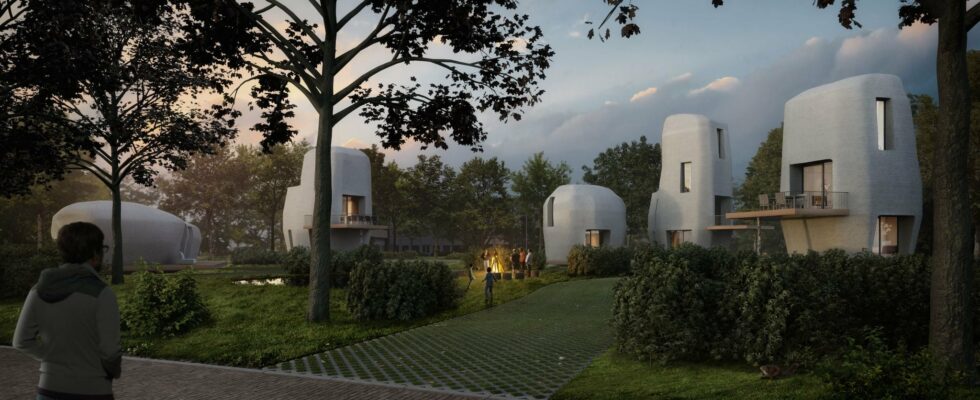In a YouTube video, an articulated arm pours concrete along a precise line, like a glacier shaping a giant Italian cone. The house will take less than twenty-four hours to assemble, and will only require two or three technicians to monitor and supervise the machine’s work. It’s every future homeowner’s dream: to build their own home in less time than it takes to move in.
France is among those who believe in it: several houses, in Reims and Nantes, have been built using 3D construction in recent years. French companies have obtained 54 patents between 2001 and 2020 in this field. Only the United States (259 patents), Germany (103) and China (61) have done better. For the Paris Olympic Games this summer, Saint-Gobain designed a skatepark with the look of a giant pinball machine with modules made using 3D concrete printing. A world first.
The market is emerging. Contacted by L’Express, the French Building Federation (FFB) admits that it does not have figures to assess the trend, whether in individual housing, industry, or public or sports furniture. But 3D construction has advantages. Time savings are the first. In the spring, in Germany, the framework of a 600 square meter industrial building was erected in just four months thanks to this.
The technology is also starting to become affordable. “Today, we are at roughly the same price levels as traditional construction,” assures Antoine Motte, founder of the French start-up Construction-3D. The entrepreneur estimates that prices could even be divided by three, “when there are local materials factories, and the tools and know-how are democratized.” A 2018 studyrelayed by the English scientific journal IOP, supports this idea, estimating that 3D printing could lower the price of an 80,000 euro construction by 30,000 euros, or more than 37% savings. In the United States, near New York, the company SQ4D sold a printed house at a price halved compared to a conventional new construction located in the same place.
More ecological housing?
It must be said that the process is labor-saving. An argument that may interest countries such as Canada, where the housing shortage is partly linked to the lack of workers to build them. Furthermore, the digitalization of construction processes could attract new, more qualified populations, particularly women, to jobs that are currently mostly carried out by men. “Our goal is for in-house engineers to allow any technician to use the machine,” insists Antoine Motte.
The last hope that 3D printing raises: that of a reduced carbon footprint thanks to the customization of the concrete pouring path. At Ponts ParisTech, it is estimated that the use of 3D printing can allow the use of up to four times less raw material. “This construction method also allows the use of new materials: the mortar is composed of recycled metallurgy, the sand that composes it is made of debris from other industries”, specifies the boss of Constructions-3D.
Obstacles that persist
It remains to monitor the design and use of the robotic arm, which could increase the environmental bill. “For traditional construction by pouring concrete, only the cost of the material counts in the total carbon footprint,” recalls Kateryna Kuzmenko, doctor in environmental science and technology at the Ecole des Ponts et Chaussées.
The real obstacle to 3D construction remains, for the moment, its modest offer. The price of a 3D printer ranges from €40,000 for small models to almost €100,000 for large ones. This cutting-edge equipment therefore only becomes profitable for entrepreneurs after a certain number of uses. Not to mention the sensors, computers, robotic arm and specialized labor – therefore more expensive – that must be mobilized to ensure the smooth running of operations. As demand increases, however, this cost will be amortized more quickly, believe the promoters of 3D construction.
Be careful, Antoine Motte reminds us all the same: if the development times are decreasing, to the great delight of those in a hurry, “the most time-consuming stage of construction remains the request for the building permit, which sometimes takes an entire year”, reminds the entrepreneur. Here, technology does not yet work miracles: you will have to be patient.
.
